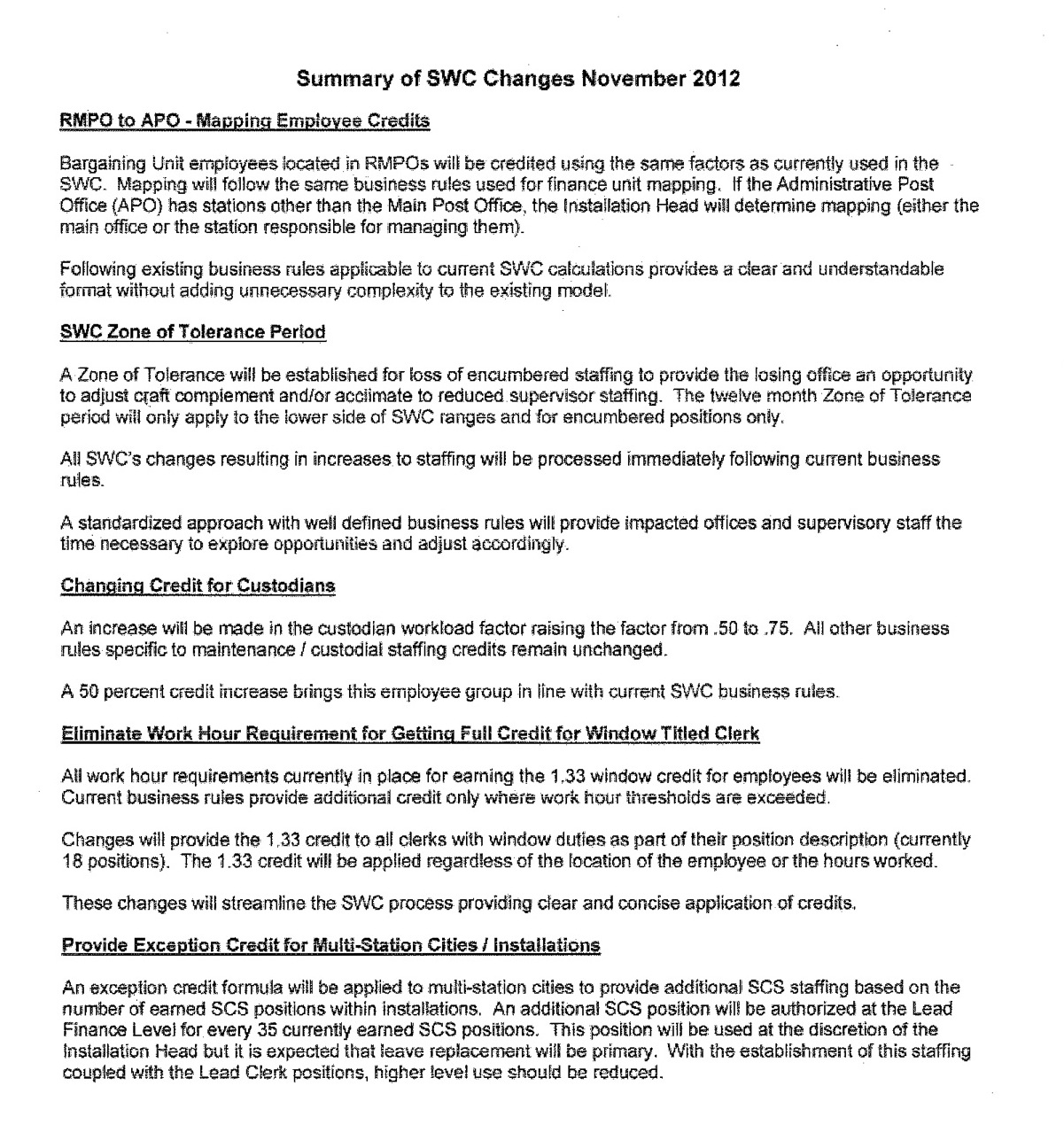OpEdNews
Original Content at http://www.opednews.com/articles/The-Postal-Service-lies-to-by-Chuck-Zlatkin-120103-433.html
(Note: You can view every article as one long page if you sign up as an Associate Member, or higher).
________________________________________
January 4, 2012
The Postal Service lies to the people of the Bronx
By Chuck Zlatkin
The United States Postal Service is planning to close thousands of post offices and hundreds of mail processing centers all over the nation. As part of this process public hearings are held. The author attended a number of these hearings in the Bronx in this capacity as the legislative and political director of the the New York Metro Area Postal Union.
::::::::
In May, the Postal Service held a hearing on the ending of mail processing at Bronx GPO. It was supposed to be the chance that residents, churches, business and cultural institutions would have to comment on the impact that the closing as detailed in the Bronx AMP would have on them. Postal management failed to notify the community sufficiently that the hearing was taking place. As reported in The Union Mail, the Postal Service contracted for the use of the Pregones Theater, which has a seating capacity of 130. The Bronx has a population of 1.3 million people. The Postal Service knew that it had done a lousy job of promoting the meeting, no need to book the 367-seat theater at Hostos Community College a few blocks away.
At the meeting, the community voiced its fears that the ending of mail processing in the Bronx would delay the mail for everyone in the Bronx. The Postal Service argued that there would be no change in mail delivery. The Postal Service cited the short distance between Bronx GPO and Morgan as the main reason there would be no negative impact. They lied.
The Postal Service said that the Bronx AMP was going to be implemented primarily to save money. When mail processing operations were shut down at Bronx GPO in October, chaos ruled. Morgan was not prepared to handle the influx of mail that was now descending upon it following the change. Trucks were backed up on Ninth Avenue waiting to find a space, truck bays were filled with trucks waiting to be unloaded, transportation platforms were saturated with mail and equipment. Too few employees were there to handle the work. Overtime was everywhere. There weren’t enough drivers to handle the new schedule; motor vehicle operators were getting penalty overtime on a regular basis. In addition to that, the Postal Service had to be paying for a lot more gasoline.
When you consider that everyone who was excessed from Bronx GPO would have a job with the USPS somewhere and you add in the cost of overtime and gasoline, you see clearly that when the USPS said they would save money by ending mail processing operations in the Bronx, the Postal Service lied.
The Postal Service’s next move against the Bronx was to “study” the closing of 17 post offices in the borough. 50% of the post offices to close in New York City would be in the Bronx, one of the two boroughs that had a population that was growing.
The Postal Service is required to hold hearings to get input from communities before it decides to close a post office. The Postal Service scheduled hearings and then sent out notices of the hearings obscured in a hard-to-read mailer instead of using an easy to read and cheaper post card. People received the notices a day or two before the hearing, if they received them at all.
The inconvenient venues selected by the Postal Service, make it difficult for impacted communities to attend. The University Heights station hearing was held at Bronx GPO, two miles away. The Postal Service knows better than anyone that the people who most depend upon its services are the elderly, the disabled, the poor, and small business owners. But despite the attempt to keep these people away from the hearings they continue to come. Yes, there were seniors and disabled people at the University Heights hearing. What wasn’t at the hearing was a translator. In addition to sending out the hard-to-read notices, the Postal Service only sends them in English, even in communities that predominantly speak other languages. Julio Pabon, President of the South Bronx Community Association helped his Spanish-speaking neighbors by translating for them as a volunteer. At the end of the hearing, he told Postal management that they should be ashamed of themselves for not providing translation, and that he should submit a bill to them. At the next hearing for Stadium station, also held at Bronx GPO, the Postal Service provided a translator.
Getting Community Input?
The Postal Service is supposedly holding these hearings to get community input as part of the decision-making process. It is 2011, block associations, church groups, political clubs record their meetings using audio or video, not the Postal Service. Most public hearings use a stenographer to take minutes for the record, not the Postal Service. No, the Postal Service has someone taking notes, not using a laptop, but by longhand. And what if you want to see a copy of the minutes submitted as the official record? “File a freedom of information request” was the answer to that question by LaTrayer Sumter-Moreau, Discontinuance Coordinator for the Postal Service.
Incompetence or disrespect?
But something unusual happened, even for the Postal Service, at the hearing on December 15, 2011 at the Hunts Point Recreational Center where the “discontinuance” hearing for the Hunts Point post office was taking place. There was Postmaster Howard Sample flanked by a number of postal managers. There were more people from every aspect of the Hunts Point Community wanting to speak than there were chairs for them. There were TV cameras from Bronx Channel 12 and NY1 and reporters from the Amsterdam News and The Chief. There was the postmaster’s opening remarks followed by dozens of impassioned pleas for the maintenance of the Hunts Point Station. There was someone ready to translate if necessary. There was one thing missing: someone taking notes!
With no record of this hearing, there is no input from the community in the decision-making process, making this the biggest lie of all.
The Postal Service announced a moratorium on postal closing until May 20, 2012
This article originally appeared in the January 2011 edition of The Union Mail.
Submitters Bio:
Chuck Zlatkin is the Legislative and Political Director of the New York Metro Area Postal Union, APWU, AFL-CIO.


